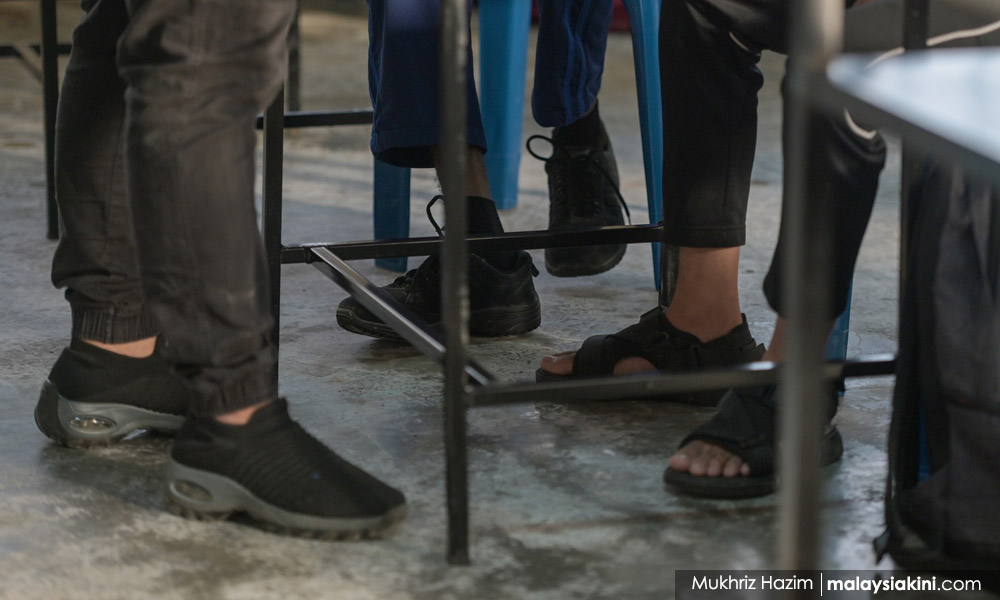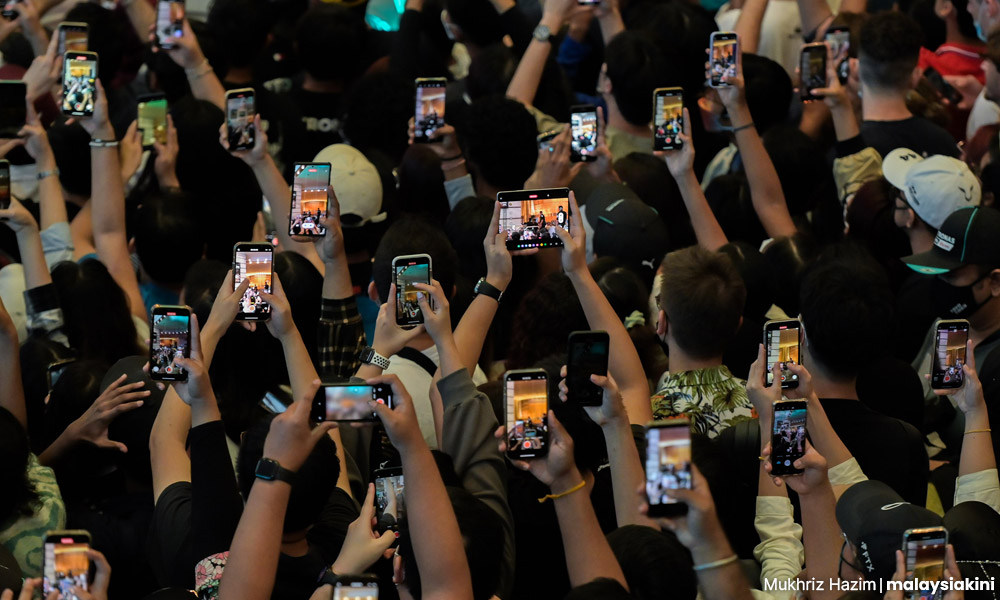What is pareidolia? Pareidolia originates in the mind. It is a psychological phenomenon where we see recognisable shapes in clouds, rock formations, or otherwise unrelated objects or data.
Our brains are wired to constantly seek ways to make sense of the world around us and this can lead to the perception of familiar objects or patterns where none actually exist.
Often, what we see is deeply rooted in our own psyche. For some of us, this could be because that is just how our brains work, and for others, it could be because something is motivating them to seek out such experiences.
In other words, we see what we want to see. Look long enough and it becomes real.
In 2004, a 10-year-old grilled cheese sandwich which was said to bear the image of the Virgin Mary was sold on eBay for US$28,000 (RM133,000).
For 10 years, a café in Tennessee displayed a cinnamon bun that bore the likeness of Mother Theresa, until it was stolen on Christmas Day 2007.
The internet abounds with such examples.
In 2015, more than one million people viewed a YouTube video that seemed to show a flock of birds over New York City forming the face of Russian President Vladimir Putin.
You need to look no closer than the soles of your own shoes. Perhaps there may be a harmless smiley face looking back at you or even something even more insidious?

More than entertainment value?
Could there be more to pareidolia other than sheer entertainment value?
Simply put, pareidolia occurs when you perceive a meaningful pattern in meaningless noise.
In medicine, we learn to use pareidolia to our advantage, detecting illness patterns in the noise of nonspecific signs and symptoms.
A long time ago, I recall my anatomy professor telling us how to identify a vein, artery and nerve which are often grouped together like a smiley face while normal bony anatomic landmarks on spinal radiographs resemble an owl's face.
Pareidolia is an exercise in creativity. The ability to see something that is not there and then translate it into reality is something that Dali and Da Vinci have used to their advantage.
This is what architects do and what writers dream of. Pareidolias lead to a creative mindset, inducing people to think with more fluency, flexibility, and originality.
Are there misconceptions about pareidolia?
I think that looking at clouds is an exercise in creativity. That must be the neuroscientist in me.

Another part of myself is strongly influenced by my parents’ era. Cloudwatching was often associated with superstition and black magic and indicated a mental health issue.
I realise that while pareidolia was useful when I was cramming for my medical examinations, it could lead to misdiagnoses if doctors see what is not there.
In medicine, the value of pareidolia is in its role as an educational and training tool. Numerous studies show that extrapolating from these findings may lead to misperceptions and misdiagnoses.
Pareidolias may be fun, but they are based on perceptions. They are not always accurate. They can be entertaining and even intriguing, but they are not always significant or meaningful.
Pareidolias are a trick of the mind and certainly should not be taken as an omen of things to come.
Can it become dangerous?
So when does pareidolia become dangerous?
Have you ever looked at a cloud and seen dragons, ducks, or dinosaurs? Are we adding meaning where meaning is absent?
Are we uncovering meaning or are we constructing it? Pareidolias are open to misinterpretation where their random patterns can be seen as meaningful messages that can lead to unwarranted fear and irrational behaviour.
A recent study conducted on undergraduate students in Switzerland found that people who tend to see objects in pictures where there are none are more likely to believe in conspiracy theories and paranormal phenomena.
Study authors Hartmann and Müller investigated this tendency to perceive patterns that are not present in the observed material.
It was often related to a tendency to endorse beliefs that are not supported by evidence such as Covid-19 conspiracy theories or beliefs in the existence of paranormal phenomena.
They proposed that psychological mechanisms behind the perception of non-existent patterns might be the same mechanisms that make one endorse beliefs without evidence.
Perhaps we need to conduct similar studies in Malaysia to see why we so readily accept squiggles on the soles of shoes as being something malignant.
What then is truth?
If pareidolia is a product of the mind, what then is the truth?
It has been said that truth is all about the facts, rather than things that are imagined or invented. So how do we know what is imagined, what is invented and what is the truth?
In his 1996 book “The Demon Haunted World”, there is a chapter entitled “The Fine Art of Baloney Detection,” where Carl Sagan outlines a future world that we now inhabit, a world where fake news and internet conspiracy theories abound.
Sagan talks of a world, where we are constantly bombarded by “information”.
He reflects on the many types of deception we are susceptible to - from psychics to religious zealotry to paid product endorsements by scientists. I am sure that if he knew about them, Sagan would most definitely include that unique species of humans known as “influencers”.

In many cases, the boundaries between imagination, invention, and truth may be blurred, and discerning between them may require careful consideration and critical thinking.
In this world, which Sagan predicted, and which we now inhabit, it becomes difficult to define the boundaries between truth and untruth.
We need a balanced mindset, and we need Sagan’s Baloney Detection Kit. Yes, you read that correctly, he actually has a Baloney Detection Kit.
Sagan shares with us the nine tools in this kit, all of which are designed to help us separate between what is true and what is perceived. He does however acknowledge that absolute certainty may not always be attainable.
Very briefly, this is what Sagan proposes:
Wherever possible there must be independent confirmation of the “facts”.
Encourage substantive debate on the evidence by knowledgeable proponents of all points of view.
Arguments from authority carry little weight. Get the experts to evaluate.
Look at alternative hypotheses rather than simply run with the first idea that caught your fancy.
Try not to get overly attached to a hypothesis. Compare it fairly with the alternatives. See if you can find reasons for rejecting it.
Quantify. If whatever it is you are explaining has some measure, some numerical quantity attached to it, you’ll be much better able to discriminate among competing hypotheses.
If there is a chain of argument, every link in the chain must work (including the premise) - not just most of them.
Occam’s Razor. This convenient rule of thumb urges us when faced with two hypotheses that explain the data equally well to choose the simpler.
Propositions that cannot be tested are not worth much. You must be able to check assertions out.
Every single one of us needs this kit.
The website marginalian.org says this kit is necessary cognitive fortification against propaganda, pseudoscience, and general falsehood.
So, the next time we see a pair of suspicious-looking socks, or another pair of shoes with wiggly shoelaces, a sacrilegious rug, or even a cloud that dares mimic some sacred text, we know what to do. - Mkini
DR ZALINA ISMAIL is a former professor in Neurophysiology at the School of Health Sciences, Universiti Sains Malaysia, as well as a fellow of the Foundation for Advancement of International Medical Education and Research.
The views expressed here are those of the author/contributor and do not necessarily represent the views of MMKtT.



No comments:
Post a Comment
Note: Only a member of this blog may post a comment.